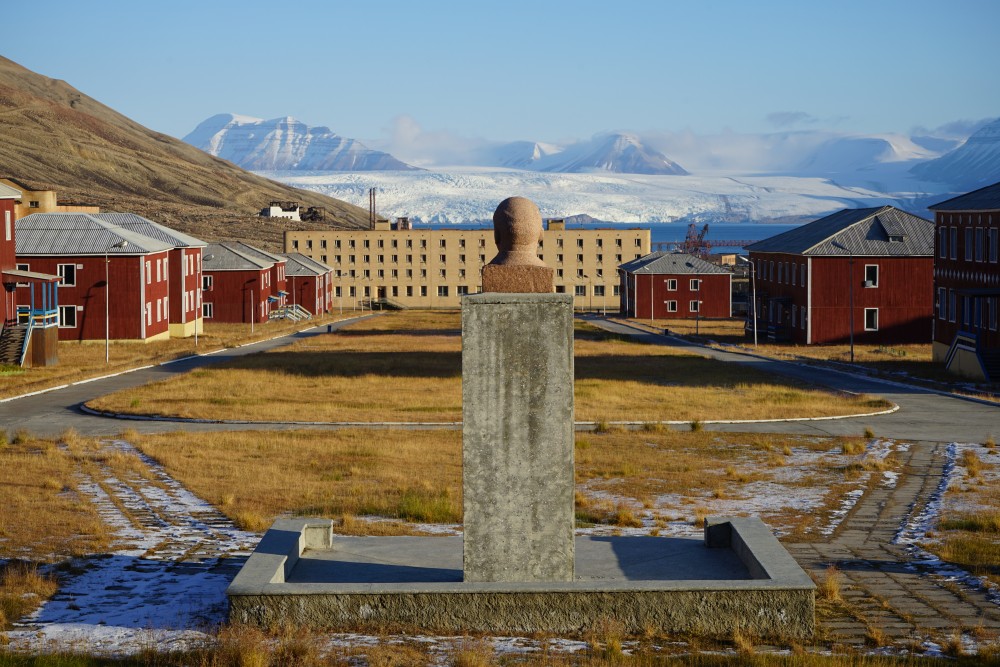

Occupied Norway became a locus of the Lebensborn program, initiated in Germany by SS leader Heinrich Himmler in 1935 to encourage the birth of Aryan babies. If the German occupiers, despite their ideology of Nordic brotherhood, kept themselves spatially and culturally apart as rulers, they promoted fraternization of another sort.

Generously designed and furnished, with theaters that showed German films, restaurants that served German food and walls that were decorated with German art, the Soldatenheime represented self-contained German worlds that reinforced the troops’ national identity in a foreign land. Among these projects were the Soldatenheime, cultural and recreational centers that Hitler commissioned for the 400,000 German troops stationed in Norway. Beyond the cultural metropolis envisioned for themselves on the Trondheim Fjord, the creation of other exclusive German spaces indicates the occupiers’ attention to their own needs as rulers. Above all, the power of racial ideology in these reconstructed Norwegian towns derived from Nazi values becoming embedded into everyday spaces and everyday lives.Įven as Hitler reassured Vidkun Quisling, the head of Norway’s puppet government, that Norway would soon regain her independence, the Germans settled in for the long term. As in Germany, Speer favored neoclassical styles for public structures, including those meant to house new Nazi institutions, but he also accommodated Norwegian ideas of placemaking. Albert Speer oversaw the Norwegian architects tasked with rebuilding, who were expected to produce designs in accordance with town-planning principles developed in Nazi Germany. We see this clearly in the reconstruction schemes for 23 Norwegian towns damaged in the 1940 invasion. Get your history fix in one place: sign up for the weekly TIME History newsletterĪlthough the occupiers did plan monumental projects, their broader strategy for intervening in Norwegian towns focused more on coopting existing environments rather than on erecting edifices that stood apart from their sites. The Germans invested considerable resources to create physical environments that would support a new social order in occupied Norway. Even before seizing power, Hitler had begun to sketch out the architectural foundations for a new Germany, which later also shaped his ideas of empire building. The Nazis’ desire to create ideal urban environments in occupied Norway-whether for the German rulers or the occupied Norwegians-underscores the importance of town planning for Hitler and his architects, who treated urban spaces as stage sets for the performance of the Volksgemeinschaft, the racial community. Knowledge about the new city and naval base was tightly controlled to avoid provoking the Norwegian resistance. Among the attractions of this location was the neighboring city of Trondheim and its association with the Vikings, a legacy the Germans wanted to appropriate for themselves.

Hitler imagined New Trondheim as the German cultural hub of the north, and thus “fabulously built,” as he told Joseph Goebbels, with a German art museum and opera house as well as other luxurious amenities. New Trondheim was the most grandiose of the projects, an entirely new city for Germans that Hitler commissioned Albert Speer to design on the Trondheim Fjord, which was also the intended site of a vast new German naval base. The Nazis had no intention of withdrawing, even as they publicly promised the Norwegians that the occupation was only a temporary measure to “protect” them from British aggression. They viewed these changes to the physical environment as preconditions for the incorporation of Norwegians into the Greater German Reich and, importantly, also for the long-term presence of German rulers in this northern land. Within months of the April 1940 invasion, the Nazis had begun to develop sweeping plans for the transformation of Norway’s towns and landscapes. Yet despite claims made by the occupiers that Norwegians and Germans shared a special bond as Nordic brothers, Hitler’s construction schemes expose a deeply colonial mindset. With ambitious architecture and infrastructure projects, Hitler sought to literally and figuratively build bridges to Norway’s citizens, bringing them into the fold of his Greater German Reich. Rather than deploy the policies of mass extermination and slave labor used in Eastern Europe, he courted them using propaganda and incentives. The Nazis believed that Norwegians were racially (although not culturally) superior to Germans, and Hitler hoped to win them over to his worldview.


 0 kommentar(er)
0 kommentar(er)
